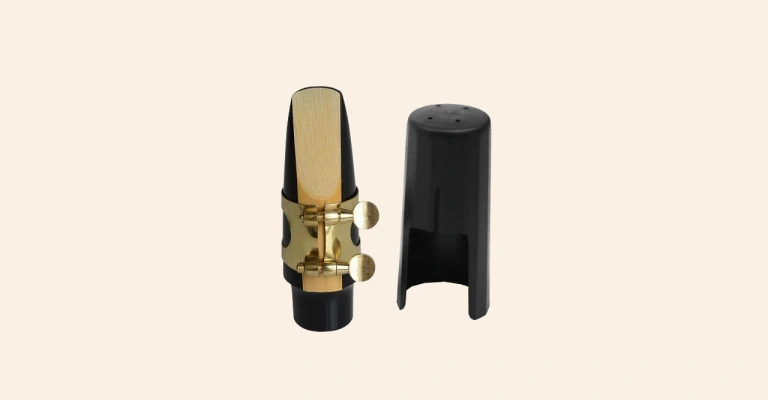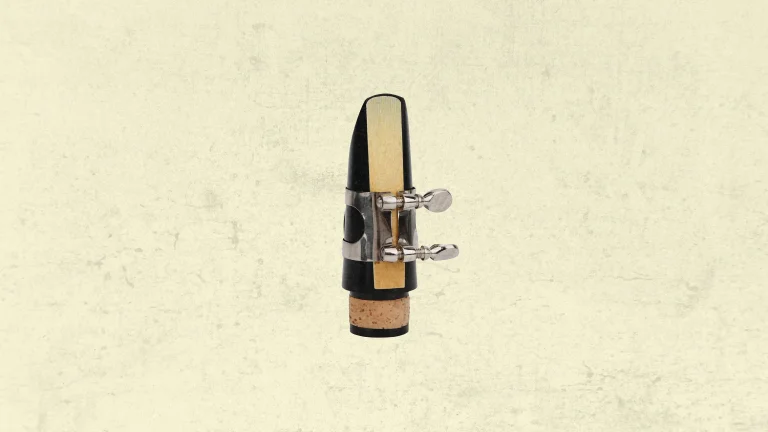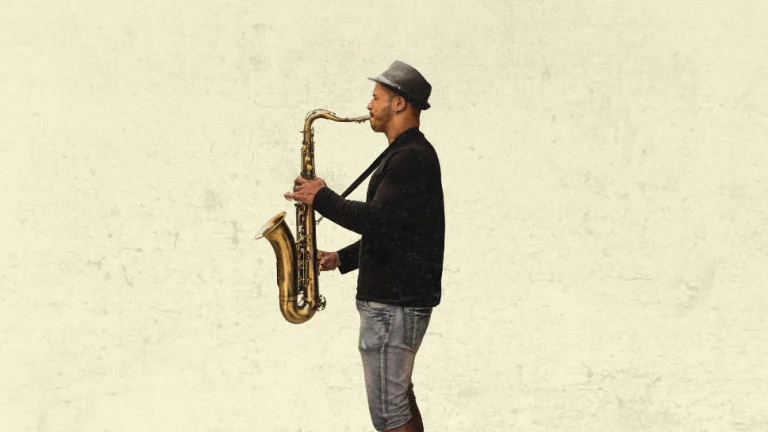You might think that to play saxophone, you need to blow into it, press some buttons and that’s it.
Unfortunately, that’s not how saxophone works and there are several things to know and consider before you play saxophone.
This guide is not about learning saxophone but about knowing the minimal requirements to play it.
Also, this comprehensive guide applies to any type of saxophone and is meant for beginners.
1. Assemble The Mouthpiece

The first thing you need to do is to assemble the mouthpiece with the reed and ligature.
When you blow into the mouthpiece, the reed vibrates and creates a specific tone. Ligature is the part that holds them together.
Here are the steps to correctly assemble the mouthpiece of a sax:
- Put the ligature on the mouthpiece but don’t tighten it yet.
- Both ends of the reed should be wet when assembling the mouthpiece. So, you can wet it with your saliva.
- Slide the reed between the ligature and mouthpiece in a way that the flat sides of the reed and mouthpiece touch. Slide it with a thick end at the bottom.
- Reed must be even on the sides of the mouthpiece but slightly below the top of the mouthpiece.
- Finally, tighten a ligature to hold them in place.
When you tighten a ligature, make sure that it’s not too tight because the reed needs a small space to vibrate.
After that, install the assembled mouthpiece on the neck of the saxophone and make sure that about 0.4-0.6 inches of the cork end is showing.
2. Posture To Play Saxophone
It’s important to know the proper posture when playing saxophone whether you are sitting or standing. Also, it’s important to know how to hold a saxophone.
First, your back should be straight and your shoulders and hands should be relaxed.
This will give you more flexibility while tension will make playing hard and a bad experience.
Then, place your right-hand thumb under the hook at the back bottom of the sax.
The right thumb goes on the black button which is placed about the middle of the saxophone body.
Also, your saxophone should have a little tilt and it shouldn’t be in a straight position.
3. Saxophone Embouchure

Embouchure is important to get a good mouthpiece grip and sound from the saxophone. It also comes in handy when you tune a saxophone.
A proper embouchure ensures that the reed will vibrate which then creates a good tone and sound.
You need to make a tiny cushion on your bottom lip – like when you say the letter “V”.
Place the mouthpiece on the cushion, place the upper teeth on the upper part of the mouthpiece, and make a solid seal with the lips.
In general, you should put about 0.4 inch of the mouthpiece in your mouth, not the whole part.
4. Playing Technique
There is a technique called “tonguing” to play a saxophone that uses our tongue.
Put the mouthpiece in your mouth and put the tip of your tongue on the tip of the mouthpiece.
Then imagine you are saying the letter “T” or the word “two” – naturally the tongue goes back into the mouth and that’s how you blow the saxophone to make a sound.
So, when your tongue goes back, blow the air into the mouthpiece to make it generate the sound.
Now take a deep breath and blow into the saxophone with the above-mentioned “tonguing” technique. Try a couple of longer blows to get used to it.
5. Finger Position

Now let’s learn where and how to position our right and left hand fingers properly.
As I’ve said, your left thumb should be on the black key and you see that the opposite side has four pearl keys where the second one is smaller.
Just place your index finger on the first key, middle finger on the third, and ring finger on the fourth key.
As for the right-hand finger, there are only three keys so place your fingers accordingly.
Now you can press the keys while blowing the air to play, change notes, and make melodies.
But one thing you should know is that if you want to play the second key, you need to press the first key too, if you want to play the fourth key, you need to press all four, and so on.
6. Saxophone Holes
The reason why the saxophone works this way is connected to holes on the saxophone. Its keys are designed to work together to produce the correct pitch and sound.
Saxophone hole quality is important and if you buying a sax for beginners, always check the quality of the holes.
A saxophone is a tube and its length determines the pitch. So, when you press the first key, the tube length becomes longer, air goes a longer distance, and pitch changes.
If you want to lengthen the tube further, then you need to press not only the first but the second key too, and so on.
This means that the combination of open and closed keys determines the notes on the saxophone.
Conclusion
This is a general guide on how to play a saxophone and it’s a great starting point for beginners. It will help you to know more about the posture, finger positions, and keys. Also, you will have a general understanding of how saxophones work.





